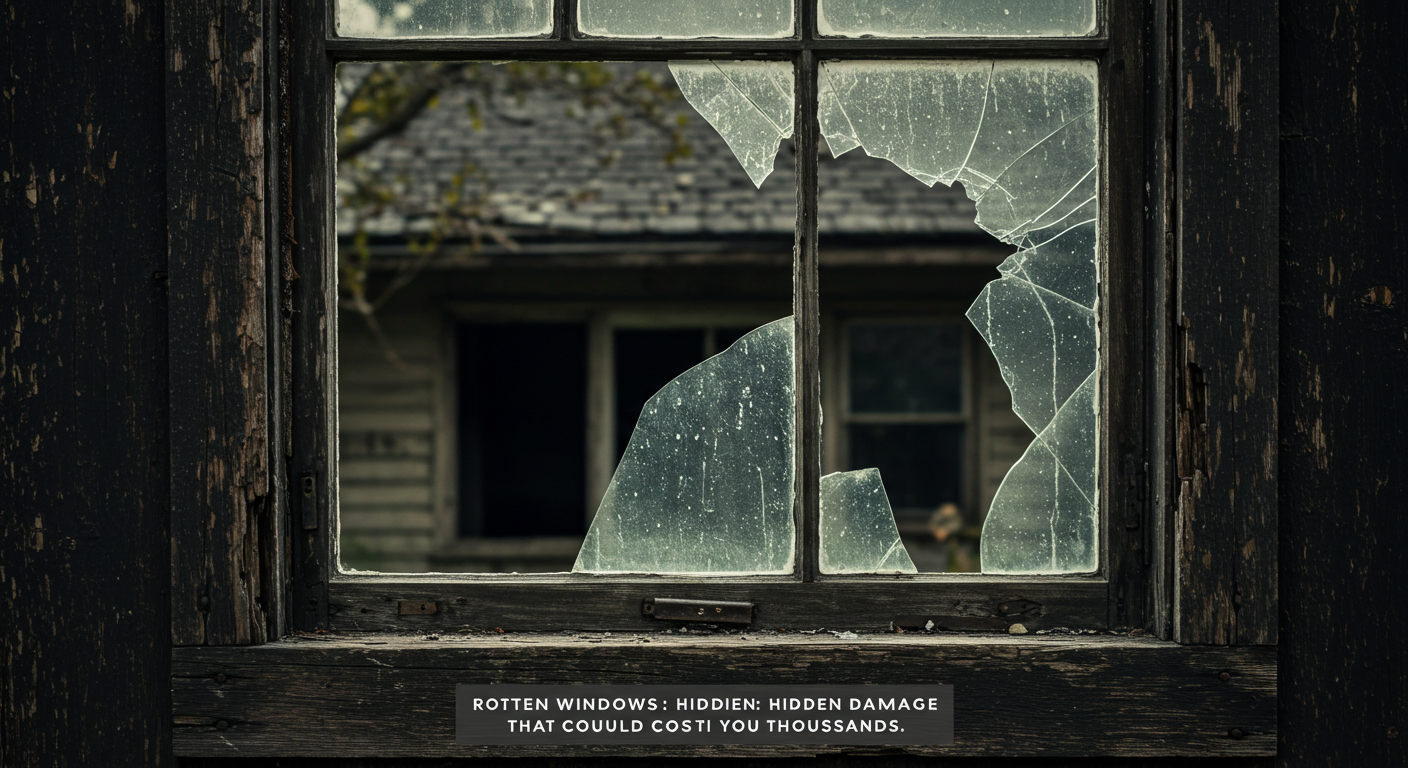When it comes to home maintenance, rotten windows are one of the most overlooked yet damaging issues homeowners face. Often disguised by peeling paint or minor discoloration, window rot can compromise your home’s structure, energy efficiency, and even health. Understanding the root causes, early warning signs, and best repair practices is essential to maintaining your property’s integrity.
Understanding Rotten Windows
Rotten windows typically result from prolonged exposure of wood to moisture, leading to fungal growth and decay. Most commonly affecting window sills, frames, and sashes, this condition can develop slowly and spread if left unchecked. Unlike a broken pane, rot affects the very frame holding your window together—making it a structural concern rather than just a cosmetic one.
What Causes Rotten Windows?
1. Persistent Moisture Exposure
The leading cause of rotten windows is water infiltration. When rain, humidity, or melting snow seeps into unsealed wood, it triggers fungal decay. Cracked caulking, damaged seals, or poor drainage around windows can allow moisture to remain trapped, creating the perfect environment for rot to thrive.
2. Poor Ventilation and High Humidity
Rooms like bathrooms and kitchens often have higher humidity levels. Without proper ventilation, moisture can condense on window surfaces and absorb into the surrounding wood, accelerating decay.
3. Neglected Maintenance
Even high-quality wood frames deteriorate without regular upkeep. Faded paint, missing sealant, or worn weather stripping can leave windows vulnerable. Over time, neglect allows minor damage to develop into widespread rot.
Signs You Have Rotten Windows
Spotting rot early can save money and prevent deeper damage. Keep an eye out for:
– Soft or Crumbly Wood
Press on your window frames—if the wood feels spongy or gives way, rot is likely present beneath the surface.
– Discoloration and Peeling Paint
Stained or bubbled paint around the window can indicate trapped moisture. Mold spots or dark streaks are also red flags.
– Drafts and Rattling Panes
If air leaks around your window or the glass rattles in place, the structural integrity of the frame may be compromised.
– Unpleasant Odors
A musty smell near the window often points to hidden wood rot or mold buildup inside the walls.
Why Rotten Windows Shouldn’t Be Ignored
Leaving rotten windows untreated can escalate into serious problems:
-
Energy Inefficiency: Gaps in rotted frames allow heat to escape in winter and enter in summer, increasing utility bills.
-
Structural Damage: Rot can extend into nearby walls, sills, and floors, weakening your home’s foundation.
-
Mold and Allergens: Moist environments promote mold growth, which can lead to respiratory issues.
-
Reduced Property Value: Damaged windows are a major red flag during home inspections and can lower resale value.
Repairing Rotten Windows: Is It Worth It?
The solution depends on how far the rot has spread.
🔧 Minor Damage: Quick Repairs
If only a small portion of the frame is affected, a repair is often sufficient. This involves:
-
Removing rotted wood with a chisel
-
Applying wood hardener and filler
-
Sanding and repainting the frame
-
Sealing all joints and edges
🛠️ Extensive Rot: Full Replacement
When rot has compromised the window’s structure or spread to multiple areas, replacement is the safest and most effective solution. Upgrading to vinyl or fiberglass windows can also eliminate future rot issues and improve insulation.
How to Prevent Rotten Windows in the Future
Prevention is far cheaper than repair. Here are proactive steps to avoid rotten windows:
✅ Maintain Paint and Caulk
Repaint your window frames every 3–5 years and inspect caulking annually. Well-sealed windows repel water and block moisture.
✅ Install Proper Drainage
Ensure gutters and downspouts direct water away from windows. Fix leaking roofs or overflowing gutters immediately.
✅ Use Window Flashing
Proper flashing around the frame helps keep water out. Ask your installer to include flashing with any window installation or replacement.
✅ Ventilate Humid Areas
Use exhaust fans in bathrooms and kitchens. A dehumidifier can also help control moisture in humid climates.
✅ Check Windows After Storms
After heavy rain or snow, inspect your windows for leaks, bubbling paint, or soft spots.
The Cost of Dealing with Rotten Windows
🪟 DIY Repair Cost
For minor repairs using wood filler and sealant, expect to spend around $50–$150 per window if you do it yourself.
🪚 Professional Repair
Hiring a contractor may cost $200–$400 per window, depending on the severity of the damage and location.
🏠 Window Replacement
Replacing a rotted window entirely can range from $500 to $1,200 or more, depending on the size, type, and materials used.
Eco-Friendly Alternatives to Prevent Rot
If you’re replacing rotten windows, consider sustainable options:
-
Composite Window Frames: Made from recycled materials, they’re rot-proof and durable.
-
Vinyl or Aluminum-Clad Wood: Combines aesthetics with protection against moisture.
-
Low-VOC Paints and Sealants: Protect the environment while preserving your window frames.
Final Thoughts on Rotten Windows
Dealing with rotten windows may seem daunting, but addressing the issue early can save thousands in future repairs. Regular inspections, proper sealing, and timely maintenance are your best defenses. Whether you choose to repair or replace, taking action is essential for your home’s safety, energy efficiency, and long-term value.
Ignoring the signs will only allow the damage to worsen, leading to mold, structural instability, and financial loss. Stay vigilant, act early, and keep your home protected from the silent threat of wood rot.











